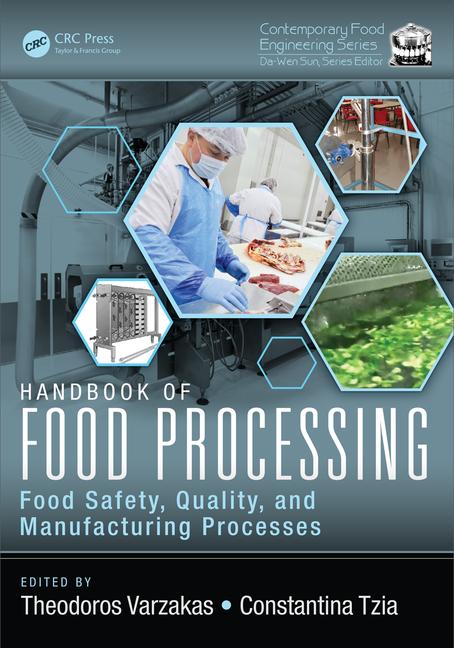Water System Management for Food Processors

Image credit: Amorn Suriyan/iStock/Getty Images Plus via Getty Images
One area that some food processors occasionally take for granted is their water systems. Water may be the most important molecule in the world. The human body is between 60 and 65 percent water, and water covers 71 percent of the earth's surface. It is the universal solvent and performs many different functions in the food processing industry. Because water fills so many roles, programs need to be developed, documented, implemented, and maintained for each role. What are some of those roles? Ingredient use, cleaning and sanitizing, waste disposal, drinking and handwashing, heating, and water recycling are among the many activities where water plays a role. So, where does one start when building out plant water quality and maintenance programs?
The objective of the program is to ensure that the water is safe and is of the proper quality for each application. This starts with the water that come into the operation. The source(s) of the water can be a well, city water, or a body of water such as a river, lake, or even the sea. Companies in remote areas, such as Alaskan salmon canneries, may be built to include water treatment plants. The company needs to establish both microbiological and chemical specifications for each potential application, including the water source(s) for the facility. The term "source(s)" is used since some operations draw water from multiple sources.
Establishing Safety and Quality Specifications
Water is a potential source of human pathogens. Typical water specifications include coliforms, Escherichia coli, and total counts. Other organisms may need to be considered, as well. As a result of a flood that overwhelmed a Midwestern water treatment facility, resulting in contamination of the water with Cryptosporidium parvum, the U.S. Food and Drug Administration (FDA) expects food processors to include that organism in their risk assessments of water systems. It is imperative that processors establish quality and safety standards for all water sources. Typical microbiological standards for city water might be less than 100 coliforms per mL and no E. coli. The role of water treatment facilities is to ensure that the water going to consumers is within specifications.
Processors need to develop a program to monitor the microbiological quality of the water they use. Water samples should be collected from one or more outlets in the plant every three months, at a minimum. The sample outlets should be the ones located farthest from the inlet pipe. When collecting the sample, the individual taking the sample should turn on the water and allow it to run for approximately five minutes. Water samples should be collected in a sterile container provided by the contract laboratory, or sterile specimen bags may be used. Thiosulfate tablets must be used to neutralize chlorine in the sample.
The samples should be labeled with the date and time of sampling. If using a contract laboratory, ensure that the laboratory is a certified water testing laboratory. The samples should be shipped to the facility in Styrofoam containers with ice or ice packs and delivered as soon as possible, so that they arrive at the laboratory within 30 hours of sampling. If any samples do not meet established standards, then corrective actions must be initiated. The same rules apply when collecting samples for chemical analyses. Samples should be tested for nitrates, nitrites, arsenic, water hardness, and pH. If there are concerns about water quality or the water system in general, then additional chemical testing for specific heavy metals may be in order.
As an example, if pipes in a city are old or there are concerns about lead, then metals testing may be necessary. One of the most important water quality standards is hardness (Table 1). Water hardness has a significant affect on many of the applications mentioned earlier. These will be addressed below.
Fig. 1 Water Hardness
| Class | ppm | gpg (grains/gallon) |
|---|---|---|
| Soft | 0–60 | 0–3.5 |
| Moderately hard | 60–120 | 3.5–7.0 |
| Hard | 120–180 | 7.0–10.5 |
| Very hard | >180 | >10.5 |
Role of Water in a Food Plant
Water is used as an ingredient in many different products from beverages to baked goods. Some industries, such as bottled water and soft drinks, establish treatment programs in-house for the water they use. These systems can include sand filters, charcoal filters, ultraviolet treatment, and ozone. Charcoal filters, in particular, must be maintained and frequently backwashed to prevent the growth and establishment of Pseudomonas in the beds. Additionally, ultraviolet light bulbs have a shelf life, and it is important to establish a change-out schedule. In the bottled water industry, residual ozone cannot exceed 0.2 ppm.
Most products using water as an ingredient can utilize the plant water source without treatment. However, some bakery products can be adversely affected by hard water, so it is imperative that processors understand their products and the ingredients that go into them. According to Dr. Kathleen Feicht of Asta Food Research, water affects baking since the pH, acidity, or alkalinity can affect not only chemical leavening agents and enzymes, but also dough characteristics and bread quality in yeasted doughs. Very hard water tends to tighten the gluten structure and retard fermentation. Soft water lacks minerals that strengthen gluten and creates soft, sticky doughs. Soft waters also lack mineral nutrients for yeast, so it is necessary to add yeast to food.
Water chemistry also plays a role when it comes to cleaning and sanitizing. One of the first actions that a supplier of cleaning chemicals should do is ask for water samples from all sources so that they will be able to select the proper chemicals for your facility. Hard water will react with some products and leave a film called re-deposit. One processor learned this lesson the hard way. When the chemical supplier asked for water samples, the company provided a single sample. The supplier tested the sample and, based on the results, provided the company with cleaners and sanitizers. A few months later, the supplier got a panicked call from the company, saying that it had just finished cleaning and everything had a white film on it (re-deposit). It turned out that the plant used two sources of water, one of which was very hard. The company had failed to provide a sample to the supplier of the hard water, which was used for the most recent cleaning.
Water chemistry is also an essential part of heating water in boilers. Hard water must be softened to ensure high performance and proper maintenance of the boiler itself.
If water is reused or recycled, it must be monitored on a regular basis. Tests should include (but need not be limited to):
- Microbiology—total counts, coliforms, E. coli
- pH
- Residual chlorine/sanitizer.
Systems should be inspected for cleanliness and other factors once a month. Records of inspections must be maintained.
Handling Water in the Food Plant
Food processors need to understand how water is handled when it enters the facility, to ensure high quality and safety. To begin with, all water inlets to the plant should be fitted with a backflow device. This device shall be tested yearly, according to state law, by an agency or plumber licensed to test backflow devices. If the device fails, it must be replaced immediately. The contractor shall provide a report to the sanitation manager. This report shall be filed in the water quality manual.
In addition, all water lines and hoses in the plant must be protected against backflow. They shall be fitted with backflow devices, one-way nozzles/valves, or air breaks. A map showing the location of all water lines and hoses with backflow devices must be kept on file with the sanitation manager. This map should be updated yearly as part of an internal audit to check the location and functioning of these devices. Decommissioned water lines must be removed immediately to prevent the formation of "dead ends" within the system.
The engineering group (or whomever is responsible for managing and maintaining the water system) shall maintain up-to-date drawings of all water, steam, and wastewater lines. The diagrams shall clearly show that there are no cross-connections between potable water and wastewater lines. Water, wastewater, and steam lines shall be properly labeled using a color-coded system—for example, green for potable water, black for wastewater, and red for steam. The drawings and plant layout shall be audited on a yearly basis as part of the internal audit program to verify that there have been no changes to the lines. Any proposed changes in plumbing shall be examined by a team appointed by the plant manager as part of the change management process. This evaluation shall include a risk assessment.
The importance of understanding plumbing cannot be underestimated. Cross-connections can adversely affect food safety and quality, and can result in illness to consumers. This can be a challenge in old facilities which have been re-purposed for food processing, as plumbing diagrams may not exist. If that is the case, then the engineering group will need to figure things out. As an example, a colleague was called in to consult with a plant that was experiencing off-flavor issues with water. The flavors were described as "stale." He determined that the facility had a dead space somewhere in the plumbing system. The company discovered a large storage tank under the concrete with small lines leading in and out. The tank was originally installed to allow UV-treated water to be stored for "emergency" use. The cement lid on the underground tank had shifted due to the movement of the Florida sand base. Consequently, sand and untreated environmental runoff water was intruding into the unmonitored tank water.
If your operation has boilers and is generating steam, then a program needs to be established to properly manage steam generation and boiler chemistry. Any chemicals used must be appropriate for the operation and application. As an example, an organic processor might mandate that all chemicals used for boiler treatments should be kosher and approved for use in organic operations. Some boiler compounds contain sulfites that can be transferred to food that is in direct contact with steam. A level of ≥10 ppm sulfites in a food product must be declared on the label, regardless of the source.
Steam lines are fitted with in-line steam traps to ensure that steam remains of good quality. Steam traps shall be routinely checked as part of the preventive maintenance program to ensure proper functioning. If the facility is using steam for food contact, then a program to produce and maintain culinary steam must be in place. This entails installing 5-micron filters in-line to remove particulates. These filters must be part of the preventive maintenance program, meaning they are checked, maintained and replaced on a regular schedule. It is also important to check steam lines to ensure that they are installed properly. Dips or droops in steam lines will accumulate moisture, which will be picked up by flowing steam.
Finally, do not forget about ice if it is used as an ingredient or in a process. Ice is food, so be sure that ice machines are cleaned and sanitized regularly (monthly). Filters shall be monitored by maintenance every quarter and replaced as required. Samples of ice shall be collected at six-month intervals and tested using the same procedures as described for plant water.
Summary
Water is the most commonly used ingredient in the food industry across the world. It has many uses, so it is imperative that processors establish programs to monitor and maintain the quality of water and the integrity of the systems for handling water in all forms. Failure to do so may result in quality problems or, worse, foodborne illness incidents.
Looking for a reprint of this article?
From high-res PDFs to custom plaques, order your copy today!







